Explore Zimbabwe’s diverse treasures: Ngweshla Campsite in Hwange National Park, historic Nesbitt Castle, and the vast oasis of Lake Kariba.
Introduction:
Nestled in the heart of Hwange National Park, Zimbabwe’s largest game reserve, Ngweshla Campsite offers an unparalleled opportunity to immerse oneself in the pristine beauty and untamed wilderness of Africa. This article delves into the allure, amenities, and adventure awaiting visitors to Ngweshla Campsite.
Location:
Situated in the northern region of Hwange National Park, Ngweshla Campsite is strategically positioned to provide access to some of the park’s most iconic wildlife viewing areas. Surrounded by acacia woodlands and grassy plains, the campsite offers a front-row seat to the wonders of the African bush.
Amenities and Facilities:
Ngweshla Campsite provides basic amenities to ensure a comfortable and memorable camping experience amidst the wilderness. Facilities include:
- Camping Sites: Spacious campsites equipped with fire pits and barbecue facilities, allowing visitors to enjoy outdoor cooking and dining under the starlit African sky.
- Water and Sanitation: Access to clean water and ablution blocks with flushing toilets and hot showers, providing essential comforts while camping in the bush.
- Picnic Areas: Shaded picnic spots where visitors can relax and unwind during the day, surrounded by the sights and sounds of the natural world.
- Ranger Station: A nearby ranger station staffed by knowledgeable park rangers who can provide information, assistance, and guidance on wildlife viewing and safety protocols.
Wildlife Encounters:
Hwange National Park is renowned for its rich biodiversity and abundant wildlife, making Ngweshla Campsite an ideal base for wildlife enthusiasts and photographers. Visitors may encounter a variety of iconic African species, including elephants, lions, buffalo, giraffes, and an array of birdlife.
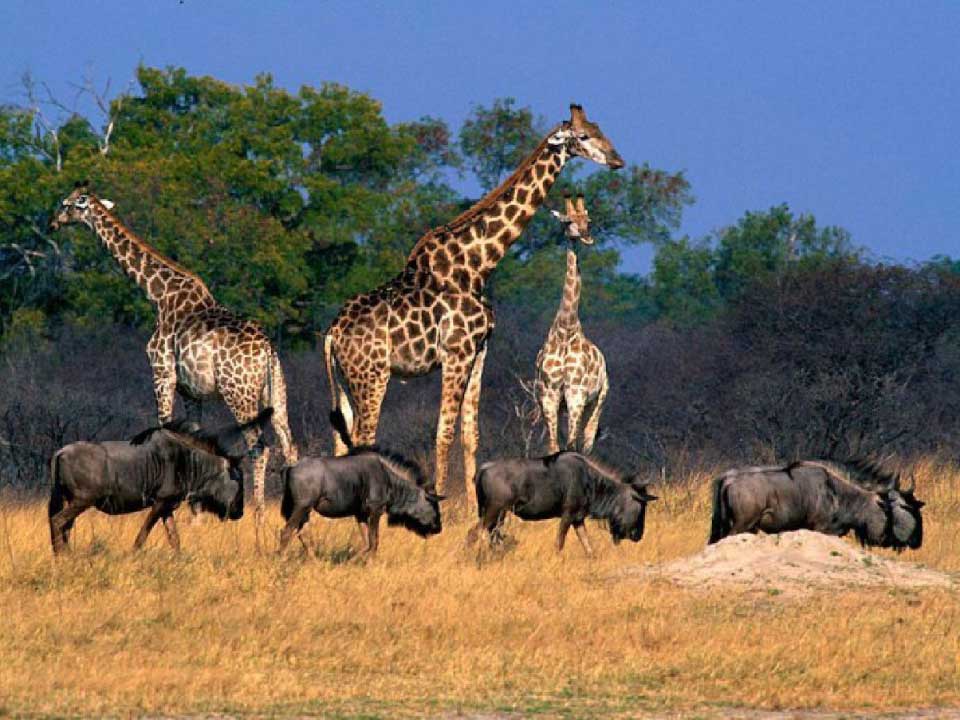
Activities:
Beyond wildlife viewing, Ngweshla Campsite offers a range of activities to enhance the camping experience:
- Game Drives: Guided game drives led by experienced rangers provide an opportunity to explore the park’s diverse ecosystems and observe wildlife in their natural habitat.
- Walking Safaris: Walking safaris offer a more intimate and immersive wilderness experience, allowing visitors to track animals on foot and gain insights into the park’s ecology and conservation efforts.
- Birdwatching: Hwange National Park is a birdwatcher’s paradise, home to over 400 bird species, including raptors, waterfowl, and colorful songbirds. Birdwatching enthusiasts can enjoy unparalleled opportunities to observe and photograph a diverse array of avian species.
Practical Information:
- Accessibility: Ngweshla Campsite can be accessed by road from various entry points into Hwange National Park. Visitors are advised to travel in suitable vehicles for navigating park roads.
- Reservations: Camping permits and reservations for Ngweshla Campsite can be arranged through the Zimbabwe Parks and Wildlife Management Authority or authorized tour operators.
- Safety: While camping in the wilderness, visitors are reminded to exercise caution and adhere to park regulations, including guidelines for wildlife encounters and campsite etiquette.
Contact
| Address : | Hwange National Park, Zimbabwe |
|---|---|
| Contact : | Central reservations – Zimparks |
| Cell : | +263(0)77 239 8947 |
| Cell2 : | +263(0)77 163 9929 |
Time Information
| Gate Opening and Closing Times : | 06:00-18:00 |
|---|
Rates and Payment
| Rates Quoted : | Per Unit |
|---|---|
| Base Currency : | USD |
| Minimum Rate : | 200.00 |
| Maximum Rate : | 200.00 |
| Updated for : | 2023 |
| Comments : | Max 6 people. Extra person USD50pp. Walk ins less than 3 people USD25pp. Conservation fee: USD15-USD20. Vehicle fee USD10-USD30. (Rate Info Updated Sept-23). |
| Payment Methods Accepted : | Cash, Foreign Currency |
| Types of Foreign Currency Accepted : | USD |
General Information
| Languages spoken : | English |
|---|---|
| Pre-Booking : | Required |
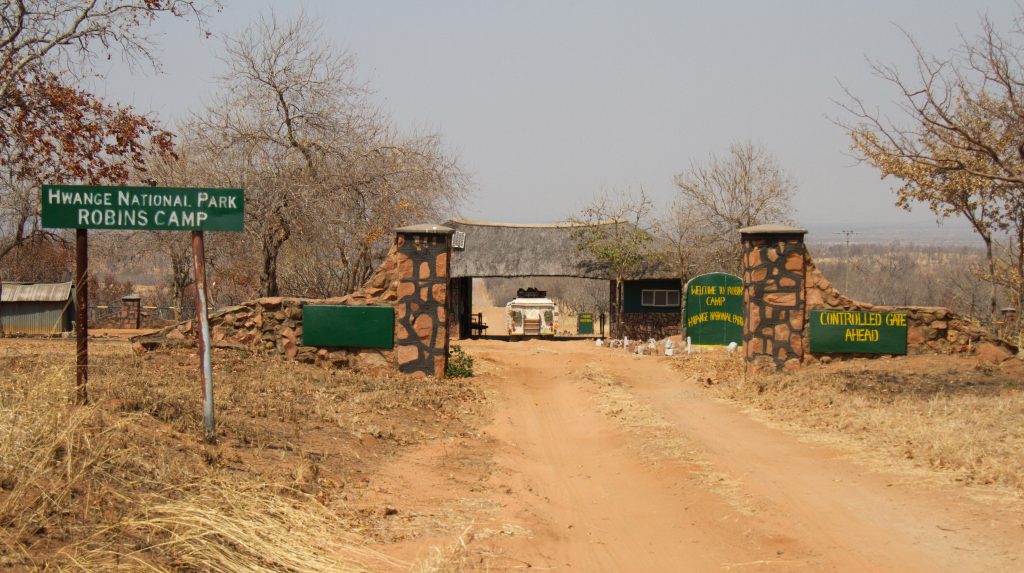
Conclusion:
Ngweshla Campsite offers a gateway to adventure and discovery in the heart of Hwange National Park. With its rustic charm, abundant wildlife, and breathtaking landscapes, it beckons nature lovers and outdoor enthusiasts to experience the magic of Africa’s untamed wilderness firsthand. Whether embarking on a game drive, enjoying a sunset picnic, or simply basking in the serenity of the bush, visitors to Ngweshla Campsite are sure to create lasting memories of their African safari experience.
Nesbitt Castle: A Historic Gem in Zimbabwe
Introduction:
Nestled in the heart of Bulawayo, Zimbabwe’s second-largest city, Nesbitt Castle stands as a timeless symbol of elegance, history, and architectural splendor. This article explores the rich heritage, unique features, and allure of this historic castle.
The historic castle, once owned by Paul and later acquired by Chiredzi businessman Digby Nesbitt, underwent a remarkable transformation under new ownership. Following its purchase, Nesbitt spearheaded extensive renovations, breathing new life into the centuries-old structure. In 1990, the castle emerged from its refurbishment as a luxurious hotel, offering guests a unique blend of history and modern comfort.
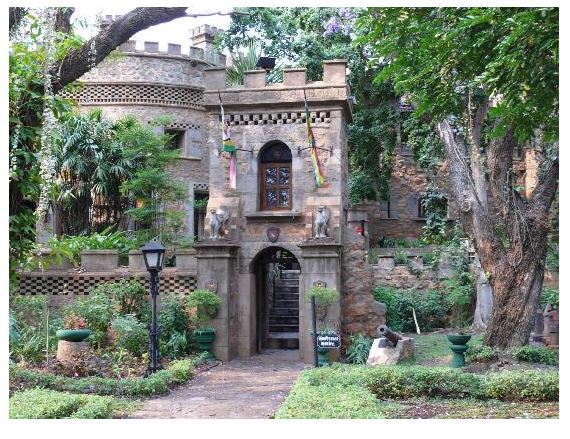
Over the years, the hotel garnered attention not only for its opulent accommodations but also for its role as a cinematic backdrop. In 1992, it served as a prominent filming location for the movie “Power of One,” directed and edited by John G. Avildsen. The film, featuring an ensemble cast including Stephen Dorff, John Gielgud, Morgan Freeman, Armin Mueller-Stahl, and Daniel Craig, utilized the castle’s timeless ambiance to bring its narrative to life.
Despite its illustrious past and cinematic acclaim, the hotel faced a setback in February 2017 when it closed its doors once again. The decision followed adverse weather conditions, prompting the need for further renovations to ensure the property’s continued splendor.
As it stands today, the castle-turned-hotel remains a symbol of resilience and reinvention, a testament to the enduring allure of its storied past and the promise of its future. With each chapter in its history, it continues to captivate imaginations and beckon travelers from far and wide to experience its timeless charm.
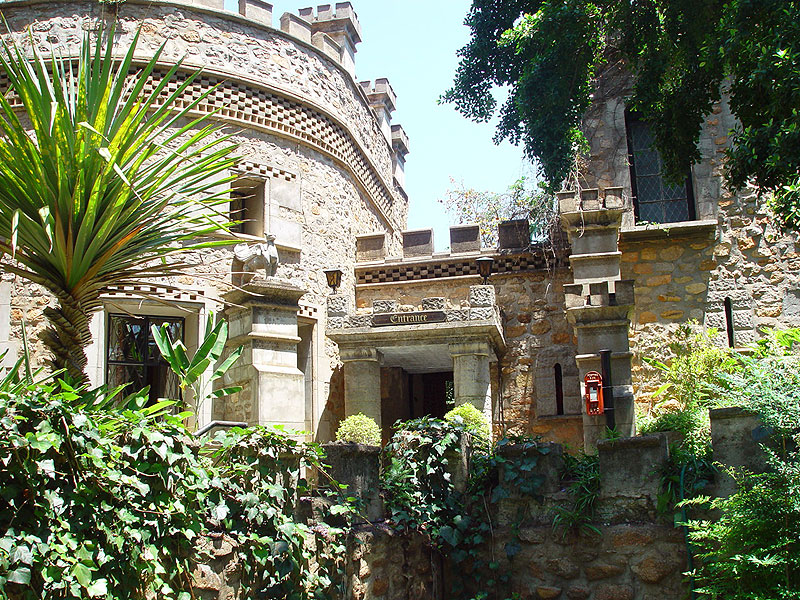
History:
Built in the early 20th century by Theodore Holdengarde, a British mining magnate, Nesbitt Castle was originally intended as a residence for his family. However, the outbreak of World War I led to Holdengarde’s departure from Zimbabwe, and the castle changed hands several times before being converted into a hotel and restaurant in the 1990s.
Architecture:
Nesbitt Castle is renowned for its distinctive architecture, characterized by medieval-inspired design elements such as battlements, turrets, and arched doorways. The castle’s stone walls and sturdy construction evoke a sense of grandeur and timelessness, transporting visitors to a bygone era of knights and nobility.
Features and Amenities:
Today, Nesbitt Castle offers a range of amenities and services for guests, including luxurious accommodations, fine dining, and event facilities. The castle’s beautifully landscaped gardens, tranquil courtyards, and ornate interiors provide the perfect setting for weddings, conferences, and special occasions.
Culinary Delights:
One of the highlights of a visit to Nesbitt Castle is its exquisite dining experience. The castle’s restaurant serves a delectable array of international and local cuisine, prepared with the finest ingredients and expertly crafted to tantalize the taste buds. Guests can savor their meals in the elegant dining room or al fresco on the terrace, surrounded by the castle’s picturesque surroundings.
Historic Significance:
Beyond its architectural beauty and modern amenities, Nesbitt Castle holds significant historical importance as a cultural landmark in Bulawayo. It has witnessed the city’s evolution over the decades, serving as a gathering place for locals and travelers alike and preserving the legacy of Zimbabwe’s colonial past.
Visitor Information:
Nesbitt Castle welcomes visitors to explore its grounds, dine in its restaurant, and immerse themselves in its rich history and ambiance. Guided tours are available for those interested in learning more about the castle’s fascinating past and architectural features.
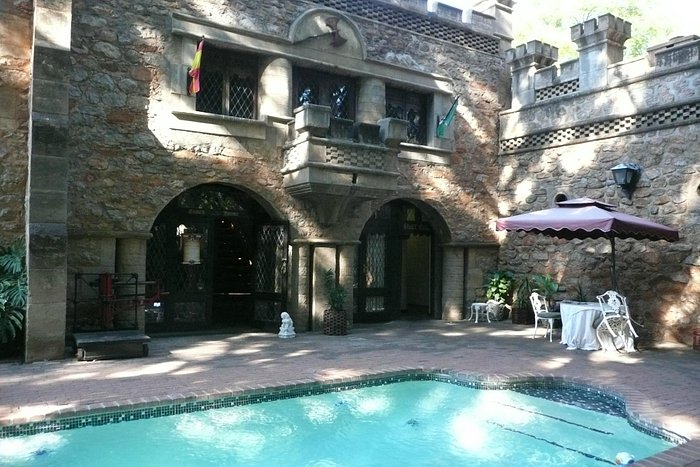
Conclusion:
Nesbitt Castle stands as a testament to Zimbabwe’s cultural heritage and architectural legacy. With its majestic presence, elegant interiors, and historic charm, it continues to captivate guests and evoke a sense of wonder and nostalgia. Whether enjoying a meal in its opulent surroundings or or simply strolling through its gardens, visitors to Nesbitt Castle are sure to be enchanted by its timeless allure.
Lake Kariba: the world’s largest manmade lake, a tourism oasis for Zambia and Zimbabwe.
History:
Lake Kariba, one of the largest man-made reservoirs in the world, is a product of the construction of the Kariba Dam, which began in the late 1950s. The damming of the Zambezi River was a joint project between the governments of Zimbabwe (formerly Rhodesia) and Zambia (formerly Northern Rhodesia). The creation of Lake Kariba not only provided hydroelectric power but also transformed the landscape, creating a vast water body rich in biodiversity.
Lake Kariba, a monumental feat of human engineering, stretches over 223 kilometers (139 miles) in length and spans up to 40 kilometers (25 miles) in width. Its vast expanse covers an area of 5,580 square kilometers (2,150 square miles), with a storage capacity reaching a staggering 185 cubic kilometers (44 cubic miles). This immense reservoir of water not only dwarfs other man-made lakes but also stands as the largest by volume globally, surpassing even the renowned Three Gorges Dam by a factor of four.
Despite its impressive scale, Lake Kariba’s depths reveal a remarkable balance between breadth and profundity. With a mean depth of 29 meters (95 feet) and a maximum depth plunging to 97 meters (318 feet), it harbors a dynamic ecosystem within its aquatic embrace. However, this prodigious body of water is not without its seismic consequences. Its colossal mass has been linked to induced seismic activity in the region, with over 20 earthquakes of magnitude greater than 5 on the Richter scale recorded—an unintended consequence of its creation amidst a seismically active landscape.
Dotted across the vast expanse of Lake Kariba are several islands, each adding their own unique character to the landscape. From the serene shores of Maaze Island to the rugged terrain of Snake Island, these islands offer a glimpse into the diverse ecosystems thriving within the lake’s confines. Whether it’s the tranquility of Chete Island or the untamed beauty of Antelope Island, each landmass contributes to the rich tapestry of life woven upon the waters of Lake Kariba.

As a testament to human ingenuity and the power of nature intertwined, Lake Kariba stands as a testament to the transformative impact of mankind on the environment. Yet, amidst its grandeur and complexity, it serves as a reminder of our responsibility to safeguard and cherish the delicate balance of our planet’s ecosystems.
Location:
Lake Kariba straddles the border between Zimbabwe and Zambia in Southern Africa. It is situated in the Zambezi River Basin, with the dam located approximately halfway along the river’s course. The lake stretches approximately 223 kilometers (139 miles) in length and up to 40 kilometers (25 miles) in width, covering an area of over 5,580 square kilometers (2,150 square miles).
10 Fun Facts about Lake Kariba:

- Size: Lake Kariba is one of the largest artificial lakes in the world by volume, with a maximum depth of around 97 meters (318 feet) and a capacity of over 185 cubic kilometers (44.4 cubic miles) of water.
- Wildlife: The lake is home to a diverse array of wildlife, including hippos, crocodiles, and numerous fish species such as tigerfish and tilapia. Its shores provide habitat for various bird species, making it a haven for birdwatchers.
- Fishing Paradise: Lake Kariba is a renowned fishing destination, attracting anglers from around the globe. The lake is particularly famous for its trophy-sized tigerfish, known for their ferocious fighting abilities and stunning appearance.
- Houseboats: Houseboating on Lake Kariba is a popular pastime, offering visitors a unique way to explore the vast expanse of water while enjoying the comforts of home. Houseboats range from luxurious vessels with all modern amenities to more rustic options for the adventurous traveler.
- Islands: The lake is dotted with numerous islands, many of which are uninhabited and provide sanctuary for wildlife. Among the most famous islands are the Bumi Hills, a scenic destination offering stunning views of the lake and surrounding wilderness.
- Sunset Cruises: Sunset cruises on Lake Kariba are a must-do experience for visitors. Watching the sun dip below the horizon, casting hues of orange and gold across the water, is a breathtaking sight that captures the essence of Africa’s natural beauty.
- Kariba Dam Wall: The Kariba Dam, which spans the gorge of the Zambezi River, is an engineering marvel. It stands 128 meters (420 feet) tall and stretches over 617 meters (2,024 feet) in length, harnessing the power of the river to generate hydroelectricity.
- Cultural Heritage: Lake Kariba holds cultural significance for the local Tonga people, who were displaced from their ancestral lands during the dam’s construction. Despite the challenges they faced, the Tonga have adapted to life along the lake’s shores and continue to maintain their traditions and way of life.
- Adventure Activities: Beyond fishing and boating, Lake Kariba offers a range of adventure activities, including water sports such as kayaking, waterskiing, and windsurfing. Visitors can also explore the surrounding wilderness on game drives, guided walks, and cultural tours.
- Scenic Beauty: Perhaps most captivating of all is Lake Kariba’s scenic beauty. Surrounded by rugged hills and lush vegetation, with water stretching as far as the eye can see, it is a landscape of unparalleled splendor that leaves a lasting impression on all who visit.
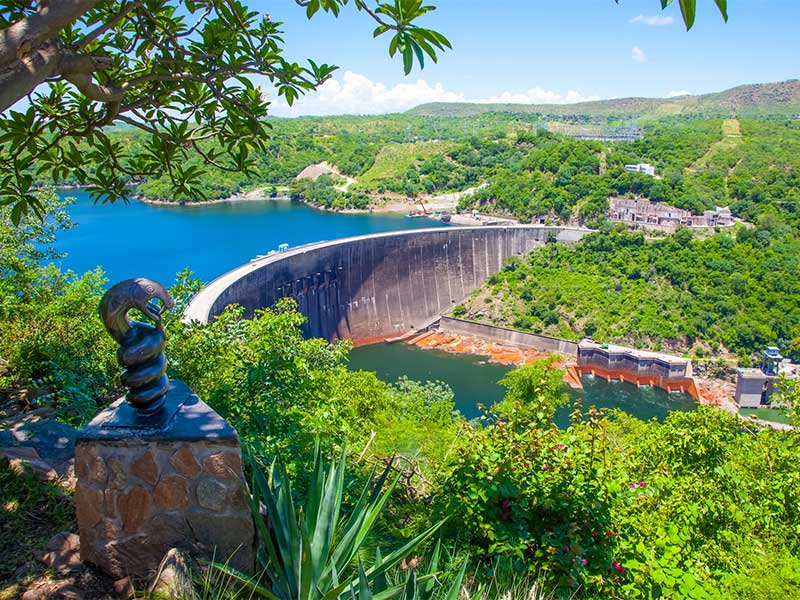
Conclusion:
Lake Kariba is more than just a body of water; it is a destination that captures the imagination and stirs the soul. From its rich history and abundant wildlife to its recreational opportunities and natural beauty, Lake Kariba offers a truly unforgettable experience for all who venture to its shores. Whether seeking adventure, relaxation, or simply a connection with nature, Lake Kariba beckons as a jewel of Zimbabwe and Zambia.
Related Reading Unveiling Zimbabwe’s Treasures: National Archives, Bvumba Mountains, and Chiremba Rocks

